- Home
- T. J. English
The Savage City Page 11
The Savage City Read online
Page 11
By the summer of ’64, Leuci had begun to sense that something was changing. One reason was the emergence of Malcolm X and the Nation of Islam on the scene. The Nation of Islam militants, with their suits and bow ties, were sometimes open in their scorn for the men in blue. Leuci remembered one occasion when he was walking in uniform along 125th Street and came upon two Nation of Islam people. They gave him a nasty look, and one of them started singing a song that was riding the Top 40 at the time: Ruby and the Romantics’ “Our Day Will Come.”
“What’s your problem?” asked Leuci.
“You’re our problem,” responded the Muslims.
The riot galvanized this kind of antipolice sentiment. For those caught in the middle of the violence, there would be many unforgettable images—cops and blacks fighting in doorways and on the sidewalks; looters being chased and clubbed; shadowy figures on rooftops throwing bricks from above. By the second day of rioting, police were no longer firing guns into the air; they were firing at people, using what cops referred to as a “gypsy gun,” nonpolice issue, unregistered, and untraceable.
Bob Leuci described one shooting in his memoir, All the Centurions (2004):
A young man, barefoot, muscular, stripped to the waist, was jumping up and down on the roof of a car, his face gleaming, his eyes wide with unspeakable rage. Theatrical and dramatic, he held a bottle in each hand and was throwing karate kicks at the cops who were trying to grab him. He stretched his neck and thrust his jaw forward as he screamed out, “White motherfuckers”…
He threw a circular kick and I reached up to snatch his ankle and missed. I swung at him with my stick, went for his leg, missed again, and he swiftly kicked me in the shoulder. He was dancing, spinning around, throwing kicks like a ninja warrior in a Kung Fu movie. I scrambled up onto the hood of the car, thinking that maybe I saw a motorcycle cop ride up. I couldn’t figure out what he was up to, shouting for me to get out of the way.
Then the guy on the roof of the car changed everything. He threw a bottle at the motorcycle cop. The cop drew his pistol, fired a shot, and blew the guy off the roof of that car.
Everyone froze.
Then everyone ran.
For three days and nights, Harlem burned. Then the chaos spread to Brooklyn.
In Bedford-Stuyvesant and Brownsville—the area where George Whitmore spent his lost night inside the Seventy-third Precinct station house—Molotov cocktails were launched from rooftops. The streets rang with the sounds of running feet, smashed shop windows, screams, the clicking of hooves from cops on horseback, the dull thud of nightsticks hitting bare skull. People stumbled through the street with blood running down their faces, shirts torn, a crazed glint in their eyes. Leuci and his TPF unit were moved from Harlem to Brooklyn, dispatched to catch looters. Residents were backing trucks up to storefronts, tying rope to security gates, and driving away, wrenching the gates off their hinges. Bricks shattered windows and looters flooded in and out with TVs, clothes, food. “Get those niggers!” commanded a sergeant. A wave of cops descended.
Police violence in Brooklyn was even more unfettered, with little control or oversight to stop it. Riot cops in helmets clubbed blacks indiscriminately: “Go on, you bastards, run.” “Yipee-yi-yo-ki-yay, get along little doggies.” A cop proclaimed: “I’m tired of you damn niggers.” A Negro boy of about ten or eleven, holding his mother’s hand, looked at the cop and said, “You think you’re having trouble tonight, just wait till tomorrow.”
After the first night of rioting in Brooklyn, Mayor Robert Wagner took to the airwaves. “Without law and order,” he announced on TV, “Negro and civil rights progress would be set back half a century. Law and order are the Negro’s best friend, make no mistake about that. The opposite of law and order is mob rule, and that is the way of the Ku Klux Klan, the night riders and lynch mobs.”
Wagner’s implication was obvious. But the era when public officials could keep the Negroes in line by evoking Klan retribution had apparently passed, and the mayor’s admonitions were ignored. That night saw more rioting, more shooting, more looting and fires, more bloodshed and death.
After the third night of chaos in Brooklyn, the sky opened—first a sprinkle, then a heavy downpour. The rains saved the city from descending further into chaos. Six straight days and nights of lawlessness and terror finally came to an end.
The postmortems ranged far and wide, some citing Negro disrespect for law and order, others citing the savage police response. “Sure, we make mistakes,” Commissioner Michael Murphy conceded. “You do in a war.”
The official tally was one civilian dead, 118 police and civilians injured, and 465 men and women arrested. Those who were there, though, believed the real numbers were higher. “I know there was more than one dead,” Bob Leuci said. “I saw more than that killed with my own eyes.
“There was a rumor among cops that, for weeks afterwards, they were still pulling dead bodies out of the lake in Central Park.”
The uprising was unprecedented in recent memory. The press and the public didn’t really know how to respond. Some viewed the insurrection with relief; at least now the Negroes had released their anger, had blown off some steam. It had been horrifying, but the worst was over.
That was wishful thinking. The war between the Negroes and the police had only just begun.
[ five ]
GETTING FLOPPED
JEROME LEFTOW HAD his hands full. His client, George Whitmore, had been charged with a series of heinous crimes. He had spent six months buried away inside a psychiatric hospital, the subject of secret experimentations with truth serum for which no one would ever be held accountable. As he slowly realized the full dimensions of his predicament, Whitmore was understandably depressed. He told Leftow he was suffering from severe headaches. One Sunday, he had asked a Bellevue doctor for some aspirin. “What do you mean bothering me on a Sunday?” the doctor barked. “You know I don’t work on Sunday. Come back tomorrow. Who do you think you are, a private patient? Don’t you understand? You’re a murderer.”
At a certain point, Leftow needed to separate himself from Whitmore and deal with the case at hand. As the charges against George played out, there were some bright spots. For one thing, it had been revealed that one of the key elements of the case against Whitmore—the photo from his wallet, the one he’d supposedly stolen from the Wylie-Hoffert apartment—was a fraud.
In fact, even before detectives at the Seventy-third Precinct had finished grilling Whitmore on the night of his alleged confession, they knew the photo wasn’t what they later claimed it to be. Two detectives had been dispatched to show the photo to Patricia Tolles, the surviving roommate. As soon as Tolles and her brother Terry looked at the snapshot, they knew it was a red herring. “No,” Patricia Tolles told the detectives. “That’s not Janice Wylie.” No way, said Terry Tolles, who had danced with Janice at the Stork Club. “The detectives made us promise not to talk to anyone about the photo,” Terry would say later.
That same night, detectives also showed the photo to Max Wylie, Janice’s father. “That’s not a photo of my daughter,” he said. “I have no idea who that is.”
The police, then, knew from the start that the photo had nothing to do with the killings. And yet they let Chief Lawrence McKearney tout the photo as a key piece of evidence—one that nearly every major news account noted in their coverage of Whitmore’s arrest.
Establishing that the woman in the photo wasn’t Janice Wylie was one thing, but before the defense could clear Whitmore’s name they’d also have to show that the photo hadn’t come from the apartment at East Eighty-eighth Street, as George had said in his forced confession. This took weeks of diligent investigation by a newspaper reporter and an investigator in the Manhattan D.A.’s office. By establishing the location of the photo and the make of the car in the picture, they were able to track down the actual woman in the photo. The woman remembered her friend taking the photo while they picnicked near a horse stable in New Jersey. The woman l
ater dropped the photo into a public garbage bin, which is how it likely wound up in the dump where Whitmore said he had found it—until Detective Bulger browbeat him into agreeing that he’d snatched it from a drawer at the Wylie-Hoffert apartment.
Then there was Whitmore’s alibi. The detectives hadn’t even bothered to check Whitmore’s initial story, that he had been working on the day of the Wylie-Hoffert murders. After he was charged, however, investigators and reporters headed out to Wildwood and found three separate witnesses who signed affidavits confirming that they had seen George at the time of the murders—a moment everyone remembered because of the televised March on Washington. A dishwasher who worked at the catering hall inside the Ivy Hotel remembered seeing George all alone in front of the TV, mesmerized by the sight of King standing before the Lincoln Memorial.
THE DISCREDITED PHOTO evidence and eyewitness affidavits were steps in the right direction. As Jerome Leftow pressed on with Whitmore’s case, however, the keys to the case still felt elusive to him. In part, this was because the Wylie-Hoffert murder case, though it had been “solved” by detectives in Brooklyn, would be prosecuted in Manhattan. Unbeknownst to Leftow, investigators in Manhattan had their doubts about Whitmore’s confession almost from the beginning.
Melvin Glass was a young prosecutor in the Manhattan D.A.’s office who had been given a copy of Whitmore’s astounding sixty-one-page confession and told to go over it with a fine-tooth comb. Glass knew every detail of the case, but even he was startled by the level of detail Whitmore had supposedly provided. It was as if it had come directly from a detective’s notebook. One detail, in particular, almost made him lose his lunch.
Among the facts Whitmore was supposed to have volunteered was that, after knocking the girls unconscious with a Coke bottle, he decided to tie them up. According to his statement, he went to the bathroom and found an unopened packet of razor blades. He opened the packet, removed a blade, and then used the blade to slice a bedsheet, which he used to bind Wylie and Hoffert together. The packaging from the razor blades, according to Whitmore, was blue.
Glass read the passage two or three times in disbelief. The young ADA knew the story of Detective Edward Bulger’s brief stint on the Wylie-Hoffert case the previous winter—of how Bulger had found the razor-blade wrapper in the bathroom and complained that it had been overlooked in previous reports, until it emerged that the wrapper had been left behind carelessly by a cop long after the murders. Glass had heard about Bulger’s complaint, which had caused tension between the detective and his Manhattan counterparts. He’d also heard the real story behind the wrapper.
But that put Mel Glass one up on Detective Edward Bulger, who had never been told that the wrapper was unrelated to the murders.
Now, in the transcript of the so-called confession he’d given months after the murders, here was George Whitmore claiming to have left behind this wrapper from the razor packet—a wrapper actually dropped by a cop weeks after the murders. As he read Whitmore’s statement, Glass saw only one explanation: Detective Bulger had spoon-fed Whitmore the detail.
Mel Glass decided to call Bulger in for a talk.
They met in the Manhattan D.A.’s office at 100 Centre Street in downtown Manhattan. Bulger was in a chipper mood. Along with Detectives Di Prima and Aidala and Patrolman Isola, he had recently received a special Public Protector Award by the Journal American. Bulger was basking in the glory of having trumped the Manhattan detectives by solving their biggest murder case in a generation. Now, unaware that Glass was having doubts about Whitmore’s confession, he spoke openly with the ADA. At one point, he even confided that he had a foolproof method for determining when a Negro suspect was lying.
“Oh,” asked Glass, “how could you tell he was lying?”
“Because his stomach was moving in and out,” Bulger replied. “Never fails. Whenever a Negro boy lies, his stomach goes in and out. That’s how I can always tell.”
Glass said nothing in reply, and Bulger left the office. The ADA was beginning to suspect the worst: that the entire Whitmore confession was an elaborate concoction.
“It doesn’t take much imagination to figure out how Whitmore got the facts,” he told his boss, Manhattan D.A. Frank Hogan, the following day. “He got them from Bulger…. Whitmore was brainwashed. That confession came from the police.”
Hogan asked Glass to itemize in a memo every discrepancy he found in the confession. When Glass showed his memo to Hogan, the D.A. picked up the phone and called the Brooklyn D.A., Aaron Koota. “Uh, Aaron,” said Hogan, “we’ve found certain infirmities in the Whitmore statement.”
The Manhattan and Brooklyn D.A.s were like two tribal chieftains operating in the same theater of battle, but the Brooklyn D.A. was clearly the junior partner. Hogan was asking Koota to acknowledge defeat, or at least a mistake of staggering proportions. The Brooklyn D.A. had a choice: he could accept that his office had presided over a grave injustice and botched the biggest murder case of the decade, or he could proceed full steam ahead. Koota decided to press forward. Publicly, the Whitmore case proceeded as if nothing were amiss. Before long, the Brooklyn D.A.’s office announced with great fanfare that their two cases, the Elba Borrero attempted rape and the Minnie Edmonds murder, were strong and ready to go. The Borrero prosecution was scheduled to begin on November 12, 1964.
Though Jerome Leftow wasn’t privy to the backroom machinations of the two most powerful prosecutors in the city, he wasn’t surprised that they would start with the Borrero case. Since Whitmore had no criminal record at all—much less a history of the kinds of violent crimes he was now charged with—the prosecution would have to dirty him up. The Borrero case was presumably their strongest, since they had an alleged eyewitness identification of Whitmore. Prosecuting George on this case would establish him as a proven sexual predator, which would only help with the later cases.
As Leftow looked at both the Borrero and Edmonds cases, it occurred to him that Whitmore may actually have been lucky that the cops were trying to pin the Wylie-Hoffert murders on him. “If George were only being charged with crimes against Borrero and Edmonds—a Puerto Rican woman and a black woman in Brooklyn—no one would have ever noticed,” Leftow noted years later. “There would have been nothing exceptional about these cases. You have to remember, we had segregation in New York back then. The system was almost completely white—white defense lawyers, white prosecutors, white judges, white cops. And no one cared. Because it broke down that most violent crimes were being perpetrated by minorities against minorities. Most of the time, when I represented a black defendant, the victim was black. The only reason people paid any attention to the charges against Whitmore was Wylie-Hoffert, two white women allegedly killed by a black male.”
As the trial date approached, Leftow was stunned by a rumor he heard from a newspaper reporter: “Hey, have you heard? Manhattan detectives have another suspect in the Career Girls Murders.”
“You’re kidding,” said Leftow.
“No,” said the reporter. “They must know Whitmore didn’t do it. They’re on to somebody else.”
To Leftow, the implication was staggering: if the cops had another suspect for the Wylie-Hoffert murders, they must know that Whitmore’s confession on those murders was bogus. And if that confession was bogus, his confessions on the other crimes were equally suspect.
Leftow rushed from his office on Court Street in Brooklyn over to the Manhattan D.A.’s office. He was given a meeting with two men: Peter J. Koste, the same ADA who had arrived at the Seventy-third Precinct in Brooklyn to serve as stenographer for Whitmore’s confession, and Koste’s boss, Alexander Herman, head of the Homicide Bureau. Leftow asked the two men flat out: “Is someone else under investigation for the Wylie-Hoffert murders?”
Koste and Herman were fully aware that there was another suspect. Since September police had been investigating a young junkie who had been implicated in the murders. The lead had fallen into their lap when a friend of the junkie was colla
red on an unrelated murder rap: in exchange for a plea, he told detectives, “You got the wrong guy on the Wylie-Hoffert murders. I know who did it. I can deliver the real killer for you.” A special detective squad had begun tailing the young junkie and even placed a recording device in the apartment of his friend. The results looked promising. There was good reason to hope that an arrest and indictment were imminent.
But Koste and Herman had a dilemma. If they told Leftow about this highly confidential investigation, it would be revealed in court and likely also in the press. If the existence of another suspect was revealed, the suspect himself would likely get wind of the investigation and clam up. Things were at a delicate stage; if the Manhattan D.A.’s office lost their suspect, they would blow the opportunity to nail down an indictment in the most sensational murder case in a generation.
The ADAs had a choice: they could tell Leftow the truth, or, in the interest of protecting their investigation, they could lie, denying it even existed. At first they stalled, hemming and hawing with Leftow until the attorney pleaded, “Look, I go to trial in Brooklyn in a matter of days. You can’t let Whitmore go to trial with the full weight of these Manhattan murders hanging over his head if you have another suspect. If the confession is wrong in relation to Wylie-Hoffert, then it could be wrong in my case. You have to tell me.”
Finally, the two men from the D.A.’s office said, “We know of nothing that can help you with your case.”
That was that: Leftow knew he wasn’t getting anything more from these two men. In his gut, he knew they were lying: the Manhattan D.A.’s office was making a calculated decision to protect their investigation. Reclaiming what they believed was rightfully theirs—the Wylie-Hoffert murder case—meant more to them than full disclosure; it meant more to them than justice. Leftow’s client, the illiterate Negro kid from Brooklyn, was left twisting in the wind.

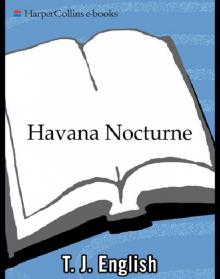 Havana Nocturne
Havana Nocturne Paddy Whacked
Paddy Whacked American Gangsters
American Gangsters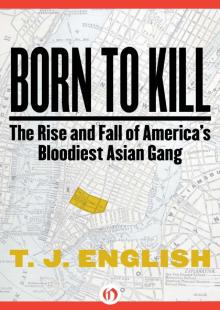 Born to Kill
Born to Kill Westies
Westies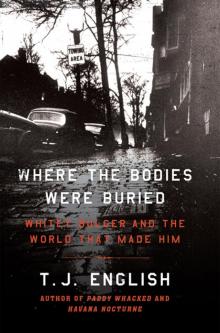 Where the Bodies Were Buried
Where the Bodies Were Buried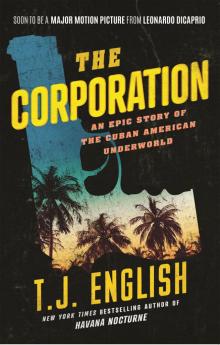 The Corporation
The Corporation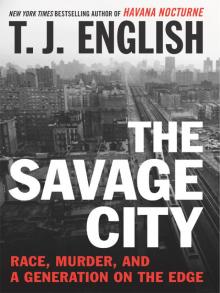 The Savage City
The Savage City